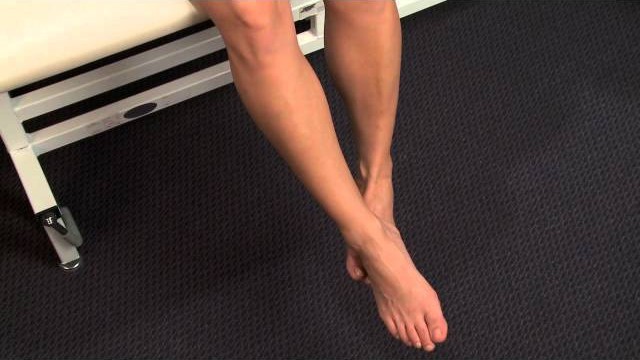Are a third of knee replacements inappropriate?
One third of total knee replacement surgeries in the United States may be “inappropriate,” according to an article published in Arthritis & Rheumatology. The findings point to the need for the development of consensus patient selection criteria for the surgery, the authors write.

Larry Hand, Medscape Medical News July 04, 2014
Daniel L. Riddle, PT, PhD, from the Department of Physical Therapy and the Department of Orthopedic Surgery, Virginia Commonwealth University, Richmond, and colleagues analyzed the records of 205 persons who underwent knee replacement at 4 sites involved in the Osteoarthritis Initiative, a 5-year study partially funded by the National Institutes of Health of patients at high risk for knee osteoarthritis.
The researchers had complete data on 175 of the 205 patients, whose mean age was 66.9 years. Almost 60% of patients were women.
The researchers then classified the patients using a modified version of a classification system published in 2003 by Antonio Escobar and colleagues in Spain, based on literature from the 1990s. The Escobar system is used to classify total knee arthroplasty (TKA) as appropriate, inconclusive, or inappropriate on the basis of patients’ symptoms, functional status, extent of arthritis, age, mobility, stability, and history of nonsurgical and surgical treatment.
The researchers found that for the TKAs performed as part of the Osteoarthritis Initiative, 44% (95% confidence interval [CI], 37% – 51%) were appropriate, 21.7% (95% CI, 16% – 28%) were inconclusive, and 34.3% (95% CI, 27% – 41%) were inappropriate.
Most patients in the appropriate category had intense or severe symptoms, were at least 55 years old, and had limited mobility. Most patients in the inconclusive category were similar but with normal mobility. Most patients in the inappropriate category had slight or moderate symptoms and had pain and functional loss “less than half that of the average patient undergoing TKA,” the researchers write. In addition, it was common in this group for patients to be younger than 55 years.
| Characterize Variation |
“The goal was not to necessarily suggest that knee replacement surgery is done inappropriately in this country,” Dr. Riddle told Medscape Medical News. “Rather, the intent was to characterize the extent of variation in the key characteristics of patients who eventually undergo a procedure. This has never been done in the US to this extent before.”
He continued, “It is our hope that characterizing this extent of variation will aid policy makers, and particularly clinicians who are directly involved with these patients, to begin to consider if one can reduce the amount of variation.”
In an accompanying editorial, Jeffrey N. Katz, MD, from the Orthopedic and Arthritis Center for Outcomes Research and Brigham and Women’s Hospital, Boston, Massachusetts, writes that he agrees with Dr. Riddle, Dr. Escobar, and colleagues that TKA might not be appropriate for patients with milder symptoms.
“But before we accept that a third of TKRs performed in the US at present are inappropriate, we should think carefully about whether ‘appropriateness’ can be judged without considering the prevailing values that patients and the larger society attach to functional deterioration and preservation,” he notes.
| Times Changed |
Dr. Katz writes that in the years since publication by Escobar and colleagues, the performance and indications have evolved for TKA, and “the importance of preoperative function as a prognostic factor has prompted clinicians to intervene earlier, rather than later, in the course of functional decline.”
Joshua Jacobs, MD, professor and chair of orthopedics at Rush University Medical Center, Chicago, Illinois, and immediate past president of the American Academy of Orthopedic Surgeons, told Medscape Medical News that the academy is currently in the process of developing appropriate-use criteria that reflect today’s clinical environment.
“The procedure is in high demand because it’s so effective,” he said. “People are living longer, and people are more active. Obesity epidemic has been increasing the prevalence of osteoarthritis of the knee and thus, the demand for knee replacement.”
Knee replacement is normally only done after nonsurgical treatment — including physical therapy, weight loss, and medications — fails, he said. “When patients fail to get improvement with those modalities and their activities and quality of life are restricted because of their knee pain, that’s when total knee replacement should be considered.”
Whether to have TKA today “is really a shared decision-making process between the surgeon and the patient,” he said.
| North American Issue |
Gillian A. Hawker, MD, professor of medicine and rheumatology at the University of Toronto, Ontario, Canada, and a board member of the Osteoarthritis Research Society International, told Medscape Medical News that overall rates of TKA are lower in Canada than in the United States, but the same trends are occurring as to “exponentially increasing” rates, probably because of increased osteoarthritis in obese patients.
“Whether or not these trends are ‘appropriate’ is the big question and the subject of much research: Do the benefits in terms of prevention of work loss/loss of independence outweigh the risks of requiring another surgery [revision] down the road and/or societal costs [in Canada] of providing these surgeries in younger folks with less severe knee [osteoarthritis]?” she asked.
The definition of appropriate also could depend on who is paying, she pointed out.
“If the patient is paying and employers benefit from less time off work/greater work productivity and/or people are able to stay independent out of nursing homes longer because of it, this is all good,” she said. “If the system is paying, as in Canada and many other socialized systems, even with these benefits, the trade-offs may be less clear as the costs and benefits are not borne by the same groups.”
| This research was supported, through the Osteoarthritis Initiative, by the National Institutes of Health, Merck Research Laboratories, Novartis Pharmaceuticals Corporation, GlaxoSmithKline, and Pfizer. The authors have disclosed no relevant financial relationships. Dr. Katz’s work is supported by the National Institutes of Health. Dr. Jacobs discloses that he receives research funding from Zimmer, Medtronics, and Nuvasive and has stock options in Implant Protection. Dr. Hawker has disclosed no relevant financial relationships. |
Source Medscape Medical News
| References |
Editorial: Appropriateness of Total Knee Arthroplasty, Jeffrey N. Katz. Arthritis & Rheumatology Vol. 66, No. 8, August 2014, pp 1979–1981. DOI 10.1002/art.38688
Riddle_et_al-2014-Arthritis__RheumatologyUse of a Validated Algorithm to Judge the Appropriateness of Total Knee Arthroplasty in the United States, A Multicenter Longitudinal Cohort Study, Daniel L. Riddle, William A. Jiranek, and Curtis W. Hayes. Arthritis & Rheumatology Vol. 66, No. 8, August 2014, pp 2134–2143. DOI 10.1002/art.38685
Also see
Appropriateness Criteria for THA or TKA, Alberta Bone & Joint Health Institute






